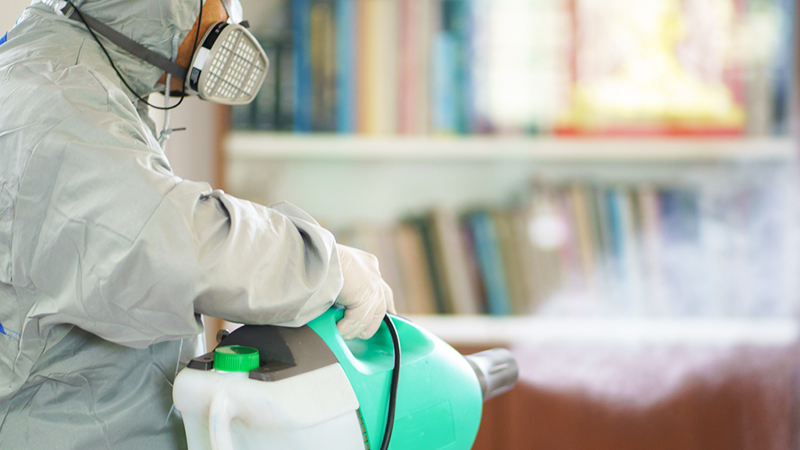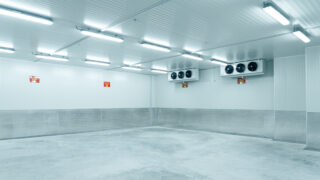We all know that surfaces such as elevator buttons and handrails in public places aren’t clean, but we can tend to forget that doorknobs and tabletops in our office and home can also carry bacteria and viruses. The team from Rentokil tells us more and offers some solutions on how to disinfect surfaces including a sanitisation treatment that might help you feel a bit safer.
How do we get ill from bacteria and viruses?
We’re constantly exposed to various viruses and bacteria, but we don’t get sick from them all. Our immune system fights against most of them, particularly those we’ve been vaccinated against or recovered from. It’s when they start damaging and invading cells and affecting their functions that we fall sick, if our immune system doesn’t respond quickly or effectively enough. This happens when our immunity is weak, or when pathogens are strong or in too huge numbers for the body to handle.
There are many ways that bacteria and viruses can enter the body – through cuts, for example, or contaminated food and drinks. Or, you can inhale droplets that come from the nose and mouth of an infected person, or touch a contaminated surface. Check out a cool infographic about germs here.
How long do they stay on surfaces?
According to the Mayo Clinic, droplets infected with cold and flu viruses can remain infectious for a couple of hours. This depends on various factors – the type of surface they land on, the surrounding environment (temperature and humidity) and the amount of droplets left on the surface, for instance. Viruses typically remain infectious for a longer time when they’re left on harder, non-porous surfaces such as stainless steel and plastic, compared to softer ones like fabrics. One study has shown that H1N1 virus strains remain infectious on stainless steel surfaces for up to seven days.
As for COVID-19, WHO says it’s not entirely clear how long this particular virus can survive on surfaces, though it’s believed to act in a similar manner as other coronaviruses. Depending on surrounding conditions, it could linger from several hours to a couple of days.
What can we do?
Practising good hygiene can go a long way. Wash your hands with soap regularly, including when you’re in contact with food and after you cough or sneeze. Scrub them well and ensure you dry them after washing to prevent the transfer of germs. If you don’t have access to soap and water, the next best alternative is a hand sanitiser. Use one that has at least 60% alcohol content as it’s more effective at killing germs. Ensure you use a sufficient amount and leave it to air-dry.
Another key method to avoid getting ill is to sanitise frequently touched surfaces such as door handles and tabletops. This reduces the chance of germs collecting and lowers the risk of spreading infections. According to an NSF study, the kitchen was alarmingly found to be one of the places with the most germs in the home.
Why is sanitising and disinfecting surfaces important?
When bacteria multiply and adhere to surfaces, they can form biofilms that gives them protection from disinfectants. So, it’s key to regularly clean surfaces so that bacteria doesn’t accumulate and become resistant to sanitising agents.
Get professional help!
Rentokil offers a surface shield sanitisation treatment carried out through misting. The formula instantly works once it has dried, reducing viruses and bacteria on surfaces. How does it work? Positively charged ions in the solution attract negatively charged pathogens, including viruses and bacteria, and attack and kill them.
The treatment is said to remove 99.99 percent of viruses and bacteria. This includes coronaviruses, Influenza A, E.coli and Staphylococcus. The formula contains food-safe ingredients so it’s safe to use in most spaces, including kitchens. It’s a water-based solution that’s proven to last up to 30 days without leaving any stains or scents. You can also continue with regular cleaning as per usual – it won’t affect the treatment’s effectiveness or antimicrobial functions.
How often should I sanitise my office or home?
Sanitising shouldn’t be a one-off job. Pathogens constantly move between humans and surfaces, so it needs to be done regularly. The treatment will be less effective, too, if we don’t practice good hygiene and keep surfaces clean. How often you’ll need to sanitise also depends on how highly used the space is. Consult the Rentokil team for more details about when and how often you should do so.
Give it a try
Sign up for Rentokil’s surface shield sanitisation treatment and get two free 500ml bottles of hand sanitiser (first 100 sign-ups).
Written in collaboration with:
Rentokil
6347 8138 | rentokil.com.sg
Read on for more about living in Singapore:
Need help getting rid of mozzies?
Tackling termites: What are the signs?







